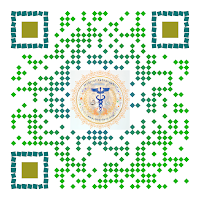Total O2 content is expressed by the following equation:
O2
content (CaO2) = (Hgb x 1.34 x SaO2) + (0.0031 x PaO2)
where Hgb is hemoglobin concentration and SaO2 is hemoglobin saturation at the given PO2.
The principal form of oxygen transport in blood is as hemoglobin-bound.
Each
gram of hemoglobin can maximally bind 1.34 mL of oxygen.
The
oxygen-carrying capacity of the blood is calculated as = [Hb] x 1.34.
In
a healthy person, with a hemoglobin concentration of 15 g / dL blood, the
oxygen carrying capacity is 20.1 mL O2 / dL blood.
Oxygen
transport is dependent on both respiratory and circulatory function.
Total
O2 delivery (DO2) to tissues is the product of arterial O2 content and cardiac
output (CO).
DO2
= CaO2 x CO
Note
that arterial O2 content is dependent on PaO2 as well as hemoglobin
concentration. As a result, deficiencies in O2 delivery may be due to a low
PaO2, a low hemoglobin concentration, or an inadequate cardiac output.
The
Fick equation of O2 consumption
VO2 = CO x (CaO2 – CvO2)
Oxy-hemoglobin
Dissociation Curve
With a normal O2 consumption of approximately 250 ml/min and cardiac output of 5000 ml/min the normal arteriovenous difference is calculated to be about 5 ml O2/dl blood. The normal extraction ratio is approximately 25%, thus the body normally consumes only ~25% of the O2 carried on hemoglobin. When O2 demand exceeds supply, the extraction fraction exceeds 25%, and conversely, if O2 supply exceeds demand, the extraction fraction falls below 25%.
When
DO2 (oxygen delivery) is moderately reduced, VO2 usually remains normal because
of increased O2 extraction (meaning mixed venous O2 saturation decreases). With
further reductions in the DO2, a critical point is reached beyond which VO2
becomes directly proportional to DO2. This state of supply-dependent O2 is
typically associated with progressive lactic acidosis caused by cellular
hypoxia.







